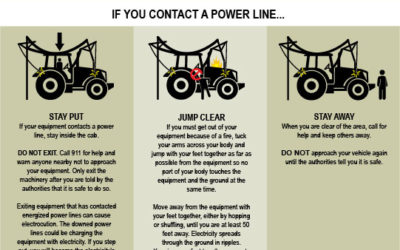
As a not-for-profit utility, Dawson PPD focuses on cost-effectively extending the life of its existing facilities while maintaining adequate levels of safety and reliability. Testing wooden poles helps the District ensure reliability and long life of its equipment, saving customers money in the long run.
Traditionally, pole testing involved a hammer for sounding, a shovel for digging around the base and drilling holes to test for decay. Today, Dawson PPD hires a contractor that uses a scientifically-based system called POLUX as a less-invasive and more accurate form of testing.
POLUX works by sending two, three inch long probes the size of an eight-penny nail into the base of the utility pole. This is the most vulnerable point where decay is most likely to occur on a pole. The probes measure resistance and moisture content of the pole. This information, along with the type of wood the pole is made of and how it was treated are run through a computer program with the pole’s GPS location recorded.
Typically, Dawson PPD uses a Southern Yellow Pine tree for its poles, which should have a resistance of 8,000 pounds per square inch when new. If the measurement falls below 50 percent of the recommended resistance, in this case 4,000 PSI, the pole is marked for replacement.
All of Dawson PPD’s poles are tested every 10 years on a rotating schedule with 10,000-11,000 poles tested annually.
OTHER NEWS
Powering your safety
Powering your safety On the farm, safety is more than a precaution. It's a way of life. Being prepared can mean the difference between life and death. If you contact a power line... Stay put If your equipment contacts a power line, stay inside the cab. DO NOT...
Energy property tax credits retroactively brought back
The federal government announced that it is retroactively bringing back various energy property tax credits that were discontinued in 2017. The tax credit may be claimed for 10 percent of the cost of qualified energy efficiency improvements and 100 percent of all...
Three ways to electrify your lawn care
Spring is here, and yard maintenance is in full swing. If you’re in the market to upgrade your lawn care equipment, you may want to consider these electric options. 1. Electric Lawn Mowers Newer cordless electric mowers are certainly more expensive than gas-powered...

